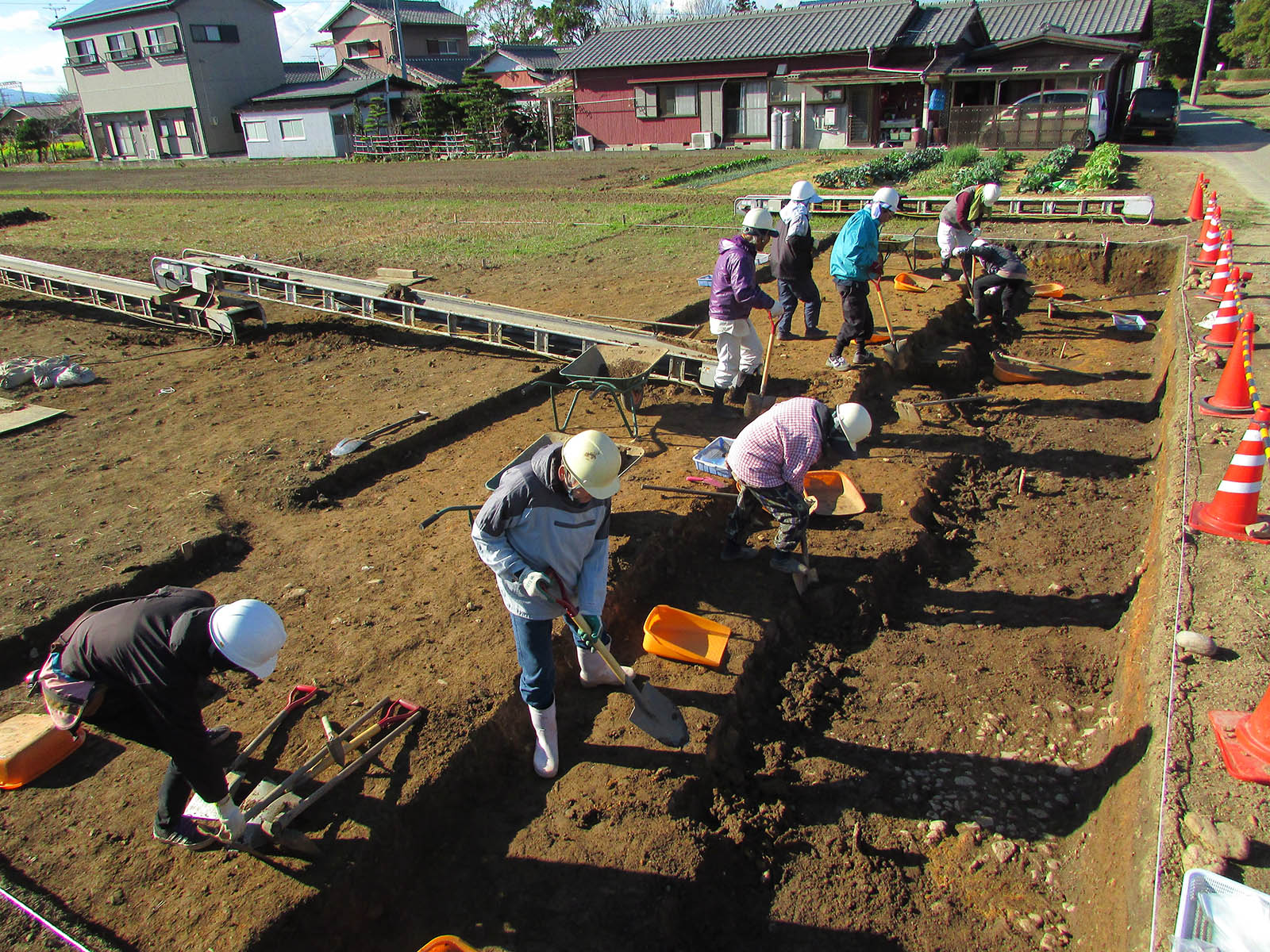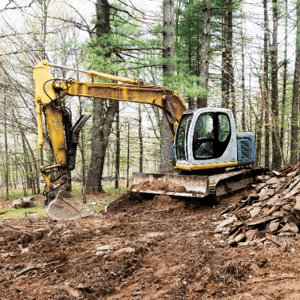The Ultimate Guide To Mini Excavator
Wiki Article
Unknown Facts About Mini Excavator
Table of ContentsThe Main Principles Of Mini Excavator 7 Simple Techniques For Excavation Contractors Near MeExamine This Report on Excavating ContractorsGeneral Contractor Fundamentals ExplainedThings about General Contractor


Scrapers or Pans dig deep into dirt in one place, haul as well as unload the soil in one more area (demolition). It is hard to match the effectiveness of scrapes for cut/fill dirt operation if the haul range is much less after that a mile. Scrapers are typically pulled by a rubber tire wheel tractor as well as are in some cases pushed via the cut location by a bulldozer.
There are lot of times that scrapes are not used for site grading and a dump vehicle is used: the haul might be to long, the haul might go across roadways where scrapes are not allowed, tough rock might be experienced, devices schedule, etc. Dump trucks remain in common usage and also most likely require little discussion.
Numerous vehicles have a top-hinged tailgate that can not dispose any type of rock larger after that the tailgate width. "Rock body" beds, on the other hand, have no tailgates and can dispose any size rock, although their quantity ability is lessened. These internet links show equipment specs for numerous typical dump trucks. Compaction Equipment enhances the thickness of the soil and also in many cases gives a smooth, rolled surface area.
The 10-Minute Rule for Excavating Contractors
From an easy test pit to percussion boring to core drilling the owner has increasingly a lot more costly alternatives that yield progressively much better data concerning the website underground. The Proprietor on a 100,000 SF building task might license twenty boring places with split spoon soil examples taken till rock is reached and also then core examples of rock.Understanding the type as well as top quality of rock (from the core examples) and also area of rock (from the soils boring) is an actual advantage in jobsite planning. On the other hand, the Owner of a 100,000 SF building may choose to proceed with no geotechnical screening whatsoever. The choice about geotechnical testing is typically made by an Owner with no input from the Building and construction Manager.
A knowledge of the approximate area of the rock aids the Building Supervisor to intend the sequence of actions complying with rock excavation. If rock is in one corner of a huge structure task, for example, the planet excavation might start at the opposite end of the structure in order to start structure work soonest.
Starting the foundation job early would be an excellent idea if the rock can be removed by tearing. If the rock is extremely hard and calls for considerable blasting, it might be prudent to hold foundation work until the blasting is finished. The Building Supervisor ought to work with these types of decisions as landscape excavation well as use all the technical date available.
How Trencher can Save You Time, Stress, and Money.
Unclassified excavation states that all rock or various other unexpected materials (excluding harmful products) run into in the sitework will certainly be the responsibility of the Professional at no change in agreement cost. An unidentified excavation is simpler from a book-keeping standpoint and also places the obligation for geotechnical conditions onto the Sitework Service provider.It's impressive what a heavy rainfall can do to a construction project. Prior to the rain, the website might be completely dry, heavy tools efficiently moving earth, the other trades smoothly executing their work.
In a lot of areas of the globe, the Building Supervisor have to keep in mind a basic truth: IT WILL RAINFALL. Excellent planning can lessen the damages and disturbance of a hefty rain to a jobsite. Typically the excavation and also grading is delegated the Sitework Service Provider (and also their Foremen is responsible to manage as well as route the heavy equipment and also drivers).
The Construction Supervisor need to be constantly conscious of what rain will do to the task website. It is not uncommon for the Sitework Foreman to work their hefty tools for optimal effectiveness and hope it does not rainfall. Among the very best methods to get ready for rain is to slope all qualities to drain pipes as well as to smooth rolled the surface before a rainfall.
Facts About Excavating Contractors Revealed
The Building and construction Supervisor should be perceptive adequate to guarantee that heavy rain does not quit working on the job much longer than required. Daily conversations with Sitework Foremen may be needed to accomplish this goal. Any kind of time excavation is required listed below the existing aquifer on a project, the procedure of dewatering must be considered.In a really cohesive dirt, the water takes a trip so gradually with the clay or silt that dewatering is not normally needed for the fairly short time of excavation. Dewatering might be needed for a single footing excavation or for a whole job site. The most usual dewatering approaches are trench drains pipes, deep wells as well as well points.

Ground water seepage can additionally be decreased by cutoff approaches such as sheet stacking. High dewatering prices have faded the profit margins on much too several jobs.
This alternative must always be taken into consideration when examining the prospect of dewatering. Undoubtedly the alternative is just practical if gravity can run the water to reduced ground. Trench drains can be cut with a backhoe and also loaded with a crude, granular material (# 4 rock as an example), but care has to be exercised in selecting the water electrical outlet kind and place.
Not known Facts About Excavation Companies
A siphon, by meaning, uses climatic stress to carry water from one altitude, up over an obstacle, to a reduced elevation. The pipelines in a siphon system need to be airtight as well as some resourcefulness is usually called for to completely fill the siphon pipe. The siphon pipeline must be complete for the siphon to start.A deep well consists of a pump, hose as well as an upright well casing. The pump intake is at the base of the well housing (generally some crushed rock is put there as a filter tool) (trencher). The water is inflated the hose, out of the well excavator case, and to anonymous an appropriate discharge area.
In a coarse sand, for instance, a huge area can be pumped to near the pump consumption altitude. A less permeable dirt, on the various other hand, decreases the performance of a deep well. Considering that the pump is typically at the end of the deep well, there are no height restrictions as a result of vacuum lift, and deep wells can reduce the groundwater over 50 feet.
Under of the wellpoint there is a 2 foot long screen as well as valve, water jets out of this shutoff and creates a hole right into which the wellpoint pipeline can be decreased. This hole is usually made a larger diameter (for example 10 inches) to permit a coarse sand backfill to help filter the water (mini excavator).
Report this wiki page